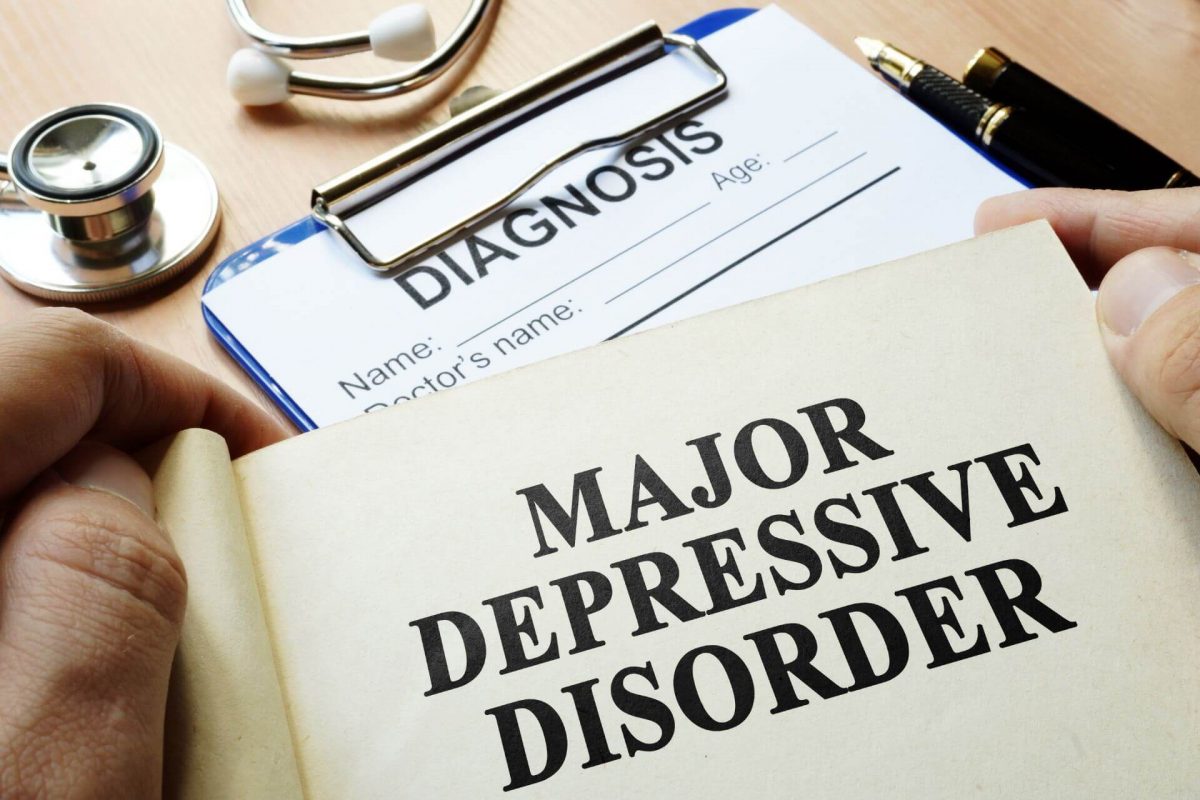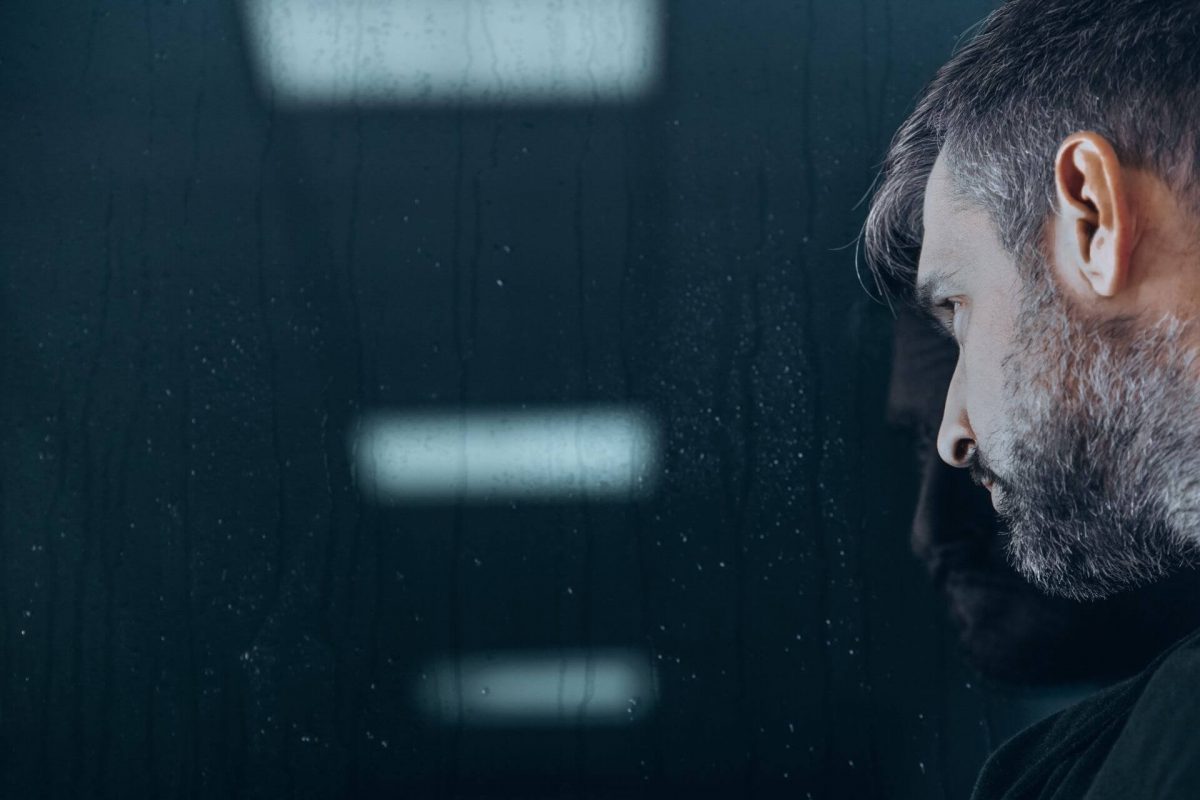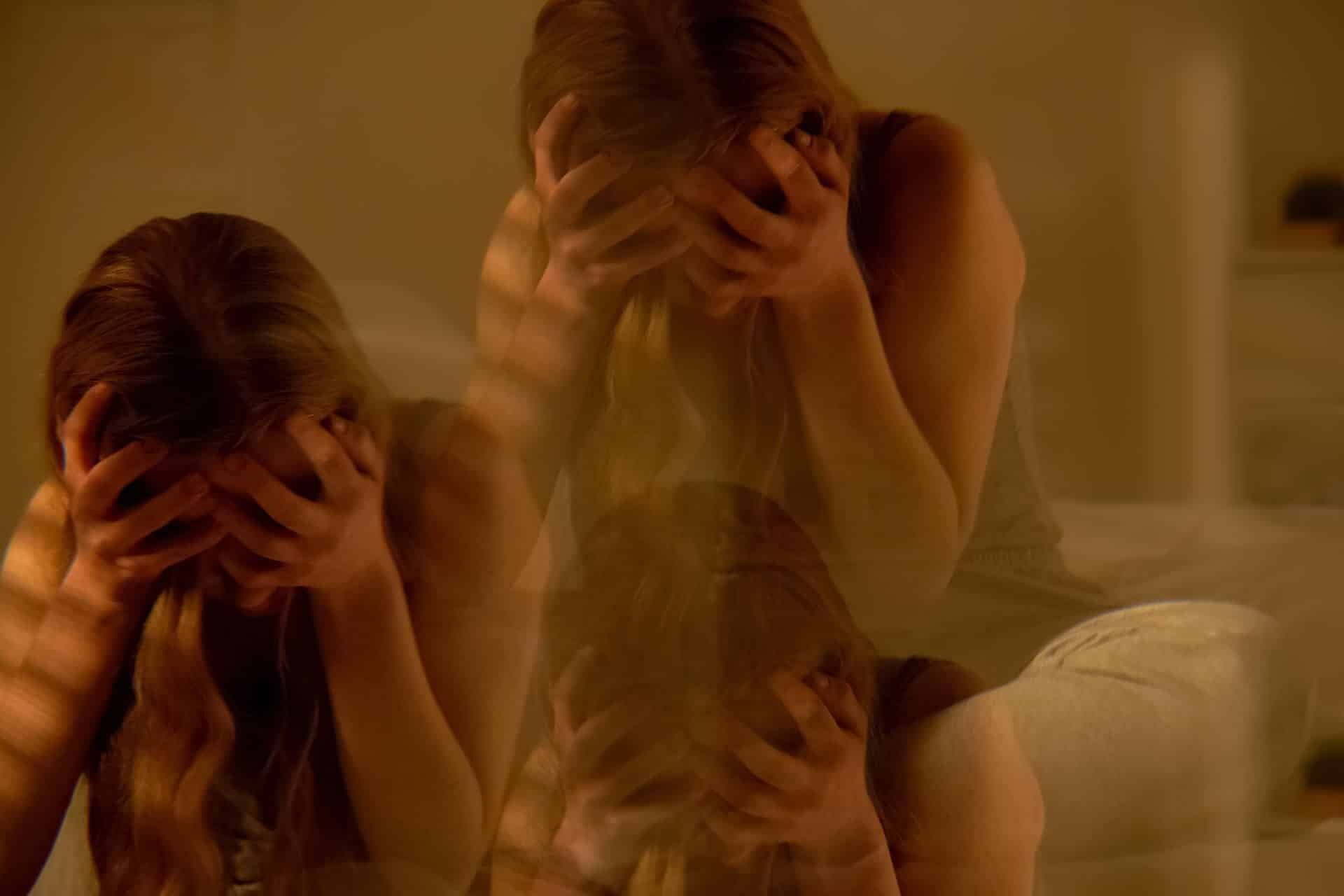A mood disorder is a mental health condition that affects a person’s state of mind or feelings, also referred to as affective disorder. Symptoms can be mild to severe and are characterised by manic or depressive episodes or a combination of the two. There are several mood disorders, but the condition is broadly grouped into depressive disorders and bipolar disorders.
What is a mood disorder?
Someone with a mood disorder experiences depressive or manic episodes or both at the same time. Due to the nature of the symptoms, you’ll hear people referring to this mental health condition as manic-depressive disorder or manic depression. Depressive or manic episodes can last for weeks, months, and even years.
Signs of manic episodes include:
- overly excited, high energy levels
- talkative, interrupt continuously, forced speech
- easily distracted
- restless, hyperactive
- agitated, highly strung, jumpy
- overconfident, inflated sense of self-importance
- abnormally euphoric, joyful
- racing thoughts, jump from one thought to another
- make poor, irrational decisions
- participate in risky behaviour
- uncontrolled shopping sprees, overspend, make bad investment decisions
Signs of depressive episodes include:
- feel extremely sad for no reason
- feel helpless, hopeless or worthless
- close to tears or cry a lot
- restless, agitated, can’t relax
- sleep too much or too little
- undereat or overeat; unexplained weight loss or gain
- show no interest in activities they once enjoyed
- disconnect or distance themselves from family and friends
- low energy levels, exhausted
- struggle to concentrate, poor memory
- personality changes, mood swings
- have suicidal thoughts, talk about ending their life, suicide attempts
- unexplained physical illness and pain
7 major types of mood disorders
Major depressive disorder

Someone with major depressive disorder experiences intense and persistent periods of sadness or loss of interest in activities and people. Depression impacts how you behave and function because the condition affects your quality of sleep, energy levels, appetite, confidence and self-esteem.
Major depressive disorder can be genetic (passed down from a parent) or triggered by stress, trauma, addiction or physical or emotional abuse. Studies show that major depressive disorder can also be caused by changes in brain chemistry and function, where neural pathways are altered or damaged.
This disorder affects young children and older adults, but it is more prevalent in people aged between 45 and 65 years. Interestingly, major depression is more common in women than it is in men.
Chronic somatic stress and neurological conditions combined with long-lasting depression can lead to suicidal thoughts and attempts. Fortunately, major depressive disorder is a treatable condition and patients respond well to a combination of anti-depression medication and psychotherapy.
How is major depressive disorder treated?
Major depressive disorder is treated with medication and psychotherapy. Electroconvulsive therapy is used for severe major depressive disorder. White River Manor also incorporates holistic therapies into an integrated treatment Program to treat dual diagnosis, including mindfulness meditation, equine therapy, and art and music therapy.
Medication for major depressive disorder:
- tricyclic antidepressants (TCAs)
- atypical antidepressants
- selective serotonin reuptake inhibitors (SSRIs)
- serotonin and norepinephrine reuptake inhibitors (SNRIs)
- norepinephrine and dopamine reuptake inhibitors (NDRIs)
- monoamine oxidase inhibitors (MAOIs)
Psychotherapy for major depressive disorder:
- cognitive behavioural therapy (CBT)
- behavioural therapy
- dialectical behavioural therapy (DBT)
- psychodynamic therapy
- Interpersonal therapy
Bipolar I disorder
Someone with Bipolar I disorder has manic episodes, and depression may or may not be present. Manic episodes last for one week or longer and may require hospitalisation if severe. To be diagnosed with Bipolar I disorder, you have had at least one manic episode that is obvious, disturbing and affects how you function and behave.
Signs of manic episodes include:
- feel extremely happy, joyful
- disproportionate, restless energy
- struggle to concentrate or focus on tasks
- racing thoughts, jump from one idea to another
- overconfident, inflated sense of self-importance
- participate in risky, out-of-character behaviour
- obsessed with sexual thoughts and urges
- have insomnia, poor sleep quality
- abuse drugs and alcohol
How is Bipolar I disorder treated?
Bipolar I disorder is a life-long condition and is treated with medicine and psychotherapy. White River Manor also incorporates holistic therapies into an integrated treatment Program to treat symptoms of Bipolar I disorder, including mindfulness meditation, equine therapy, and art and music therapy.
Medication for Bipolar I disorder:
Bipolar I disorder is treated with mood stabilisers and antipsychotic drugs. If depression is present, the patient will be given an antidepressant drug.
Lithium carbonate and valproic acid are the most widely used drugs for Bipolar disorder treatment.
- Lithium is a mood stabiliser and reduces symptoms of mania, hypomania and depression. Brand names include Priadel, Camcolit, Liskonium and Li-Liquid.
- Valproic acid is a mood stabiliser and is used to treat bipolar disorder and epilepsy. Brand names include Depakote, Convulex, Syonell and Belvo. These drugs are not recommended for women and girls who are sexually active and may become pregnant.
Psychotherapy for major depressive disorder:
- cognitive behavioural therapy (CBT)
- dialectical behavioural therapy (DBT)
- Interpersonal therapy
- social rhythm therapy
Bipolar II disorder
Someone with Bipolar II disorder experiences manic and depressive episodes at the same time. The mania experienced in this type of bipolar disorder is known as hypomania and is less severe than manic episodes. Major depression sets in before or after a manic episode. Hence, the more common term of manic depression.
Bipolar I and II share similar symptoms, but manic episodes of Bipolar II are less severe. Hypomania is not as intrusive or disruptive as mania, and often people with Bipolar II are popular because they’re fun to have around.
The problem with hypomania is it can lead to erratic, risky behaviour that can endanger your life. Hypomania tends not to affect how you cope with daily life, but the chronic depression that accompanies the disorder can cause problems at school, work or home.
How is Bipolar II disorder treated?
Bipolar II disorder is a life-long condition, and there is no straightforward cure. Manic and depressive disorders is treated with medicines and psychotherapy that help to stabilise moods and depression and help you cope with daily life.
Bipolar I and II are treated with the same prescription medication. Lithium is the most widely-used drug for bipolar disorders.
Dysthymic disorder
Dysthymic disorder is an acute form of depression, also referred to as persistent depressive disorder. Someone with dysthymic disorder feels extremely sad, hopeless, worthless almost all the time, and suffers from very low self-esteem and self-confidence.
Dysthymic disorder has a devastating effect on how a person functions and manages relationships with family, friends and colleagues. They lose interest in everyday activities and avoid social interactions at school, home or work.
People with the dysthymic disorder find it near impossible to be joyful and enthusiastic and live in a persistent state of unhappiness, anger and personal torment. Symptoms of the dysthymic disorder can be mild, moderate or severe. People with a severe form of the condition are at risk of harming themselves or committing suicide.
Signs of the dysthymic disorder include:
- persistent sadness, hopelessness and discontentment that is out of proportion to their life circumstances
- lack of interest in everyday life, special occasions and relationships
- overeat or undereat
- sleep too much or sleep too little
- struggle to concentrate, poor memory
- slow speech, struggle to communicate clearly
- irritable, aggressive, quick to anger
- indecisive, procrastinate, put off doing important things
How is dysthymic disorder treated?
There is no cure for dysthymic disorder, but it is a treatable condition.
Medication for dysthymic disorder:
- sertraline treatment
- tricyclic antidepressants
- selective serotonin reuptake inhibitors (SSRIs)
- monoamine oxidase inhibitors (MAOIs)
- noradrenergic agents
Psychotherapy for dysthymic disorder:
- cognitive behavioural therapy (CBT)
- interpersonal psychotherapy
- brief supportive psychotherapy, sertraline treatment
Cyclothymic disorder
Cyclothymic disorder is a mild mood disorder characterised by mood swings and brief periods of depression and hypomania. Someone with cyclothymic disorder experiences high and low moods, but the severity and duration are not as extreme as the depressive and manic episodes associated with bipolar disorders.
You can live a reasonably normal life with the disorder if you manage symptoms of hypomania and depression with psychotherapy. Antidepressants are prescribed if the condition worsens and the depression starts to affect how you function and behave.
Substance-induced mood disorder
The substance-induced disorder is characterised by depression, anxiety, psychotic and manic episodes induced by the overuse and abuse of alcohol or drugs. Symptoms of the substance-induced disorder appear while you’re using the substance or while in withdrawal. Weirdly enough, you can experience feelings of extreme sadness and hopelessness while ‘high’ on drugs or intoxicated.
The overriding symptom of substance-induced mood disorder is chronic depression. The other symptoms are far worse than what you experience when hangover or a ‘crash’ after using drugs. Someone with substance-induced mood disorder loses interest in activities, family and friends and have a little zest for life.
This disorder is only diagnosed if symptoms of the major depressive disorder occur after you develop a dependency on alcohol or drugs. If you have a history of chronic depression before developing a drug or alcohol addiction, you don’t have a substance-induced mood disorder.
The following substances are common triggers of substance-induced mood disorder:
- alcohol
- opioids (fentanyl, codeine, morphine, heroin)
- sedative drugs (barbiturates, benzodiazepines)
- stimulant drugs (cocaine, crack, amphetamines)
- inhalants (glues, paint thinners, dry-cleaning fluids, gasoline)
- hallucinogen drugs (LSD, PCP, magic mushrooms, ketamine)
- hypnotic drugs (Xanax, Librium, Valium, Ativan)
- study drugs (Ritalin, Concerta, Adderall)
How is substance-induced mood disorder treated?
Substance-induced mood disorder is treated with an integrated addiction treatment Program that includes medical detox, controlled-use medication and psychotherapy.
Medication for substance-induced mood disorder:
Medication is prescribed to treat symptoms of alcohol or drug withdrawal during medical detox. It depends on what substance has been abused and over what period. Standard drug treatment includes:
- anticonvulsants
- antidepressants
- antipsychotics
- antivirals
- cardiovascular agents
Psychotherapy for substance-induced mood disorder:
- cognitive-behavioural therapy (CBT)
- motivational enhancement therapy (MET)
- interpersonal therapy
Medical-related mood disorder

Medical-related mood disorder is characterised by chronic depression and anxiety, triggered by a terminal illness, chronic infection, surgery or life-altering injury. This type of mood disorder may take time to develop or it occurs spontaneously when the medical health problem arises.
It’s well known that the following illnesses or afflictions can lead to a mood disorder:
- heart attack
- cancer
- Parkinson’s disease
- Alzheimer’s disease
- Huntington’s disease
- Irritable bowel syndrome (IBS)
- Crohn’s and ulcerative colitis
- chronic infections
- surgery
- paralysis
How is a medical-related mood disorder treated?
Someone with a medical-related mood disorder benefits from an integrated treatment Program that combines antidepressants or anti-anxiety medication, psychotherapy, physiotherapy and a healthy, balanced diet.
Premenstrual dysphoric disorder
This disorder is commonly known as premenstrual tension (PMT) and is characterised by extreme mood swings before or during menstruation. Someone with the premenstrual dysphoric disorder (PMDD) has more severe symptoms than the usual aches and pains you get when you’re menstruating; so much so, they negatively affect one’s daily life and ability to function normally.
Common signs of the premenstrual dysphoric disorder include:
- angry, aggressive
- irritable, agitated, restless
- anxious, worried
- extremely tense
- extreme sadness
- cry a lot, prone to hysterics
- feel hopeless or helpless
How is premenstrual dysphoric disorder treated?
A change of diet, regular exercise, health supplements, and anti-inflammatory medication help relieve PMDD symptoms. In severe cases, you may be prescribed SSRIs or birth control pills.
Disruptive mood dysregulation disorder
Disruptive mood dysregulation disorder (DMDD) is a condition that occurs in children between the ages of 6 and 18 years. It is characterised by extreme anger, irritability, intense temper tantrums and uncontrolled outbursts. DMDD is a severe disorder that can impair both the child and parents’ quality of life.
Children with DMDD struggle to perform well at school and find it difficult to make friends. They can fly into a fit of rage with little or no provocation. Most children outgrow DMDD, or they develop coping mechanisms to control their temper and frequent outbursts. If the behaviour persists after 18 years and into adulthood, it’s highly likely there is another mental health disorder present.
Signs of disruptive mood dysregulation disorder:
- extreme temper tantrums, three or more times a week that continue for at least a year
- struggle to make friends or fit in at school because of their uncontrolled behaviour
- angry or irritable for most of the day, almost every day
- no verbal filter, say hurtful and mean things
- disrupt the home environment with their verbal abuse and behaviour
How is disruptive mood dysregulation disorder treated?
There is no FDA-approved medication available specifically for DMDD, but the condition is treated with an integrated treatment Program that includes medication, psychotherapy, holistic therapies, health supplements and a healthy, balanced diet.
Medication for disruptive mood dysregulation disorder:
- stimulant drugs (used to treat ADHD)
- antidepressants, SSRIs
- atypical antipsychotics (used to treat autism)
Psychotherapy for disruptive mood dysregulation disorder:
- cognitive behavioural therapy (CBT)
- dialectical behaviour therapy (DBT)
- parent training
We’re here to help.
Contact us today if you’d like a confidential and free chat with one of our highly-trained mental health and addiction care professionals at White River Manor in South Africa.







